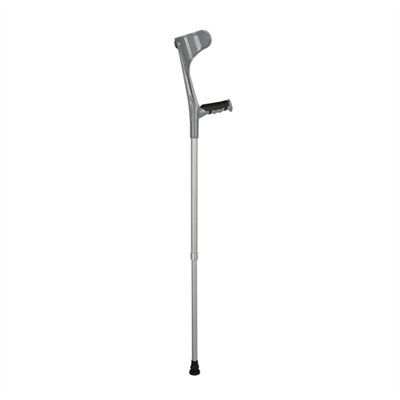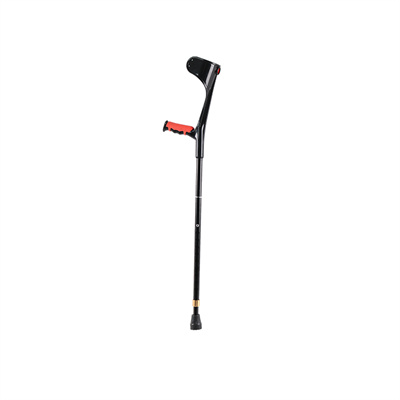The choice between crutches and knee scooters depends on various factors, including your specific injury or condition, your mobility level, comfort preferences, and lifestyle. Both crutches and knee scooters have their advantages and disadvantages, so it’s important to consider your individual needs and consult with your healthcare provider or physical therapist for guidance. Here’s a comparison to help you decide which may be better for you:
Crutches:
Advantages:
- Wider Applicability: Crutches can be used for a wide range of mobility issues, including leg injuries, surgeries, and balance problems.
- Weight-Bearing Control: Crutches allow for better control over weight-bearing on the injured or weaker leg. You can adjust the amount of weight placed on the leg by varying the pressure on the crutches.
- Maneuverability: Crutches can be used in various environments, including tight spaces, stairs, and uneven terrain, with practice and the correct technique.
- Upper Body Workout: Using crutches can help strengthen your upper body muscles, including your arms, shoulders, and core.
Disadvantages:
- Learning Curve: It can take time to become proficient with crutches, and the initial use may be uncomfortable or cause underarm pain or chafing.
- Increased Fatigue: Extended use of crutches may lead to upper body fatigue and discomfort, especially in the hands, wrists, and shoulders.
- Reduced Hands-Free Mobility: Crutches require the use of your hands for support, which can limit your ability to carry items or perform tasks while moving.
Knee Scooters (Knee Walkers):
Advantages:
- Improved Mobility: Knee scooters are generally easier to maneuver than crutches, providing more stability and faster movement.
- Hands-Free Operation: Knee scooters allow you to keep both hands free, making it easier to perform tasks and carry items while moving.
- Less Upper Body Strain: Knee scooters reduce the strain on your upper body compared to crutches, as they primarily rely on your uninjured leg for support.
- Comfortable Seating: Most knee scooters have a padded knee rest, providing comfort and support to the injured leg.
Disadvantages:
- Not Suitable for All Injuries: Knee scooters are mainly designed for lower leg injuries and surgeries. They may not be suitable if you have a hip, upper leg, or non-weight-bearing injury.
- Limited Applicability: Knee scooters may not work well on uneven terrain, gravel, or stairs. You may need to use crutches or adapt your mobility strategy in these situations.
- Bulkier Design: Knee scooters can be bulkier than crutches, which may be a concern if you have limited space in your home or need to transport it frequently.
In summary, crutches offer versatility and are suitable for a wider range of conditions but come with a steeper learning curve and the potential for upper body strain. Knee scooters provide excellent mobility, hands-free operation, and reduced upper body strain but are more limited in their applicability.
Ultimately, the choice between crutches and knee scooters should be based on your specific situation and comfort level. Consult with your healthcare provider or physical therapist to determine which option is best for your recovery and mobility needs. In some cases, a combination of both devices may be the most practical solution.




















